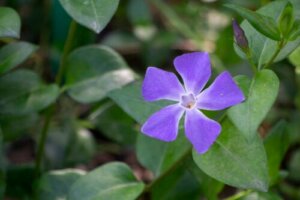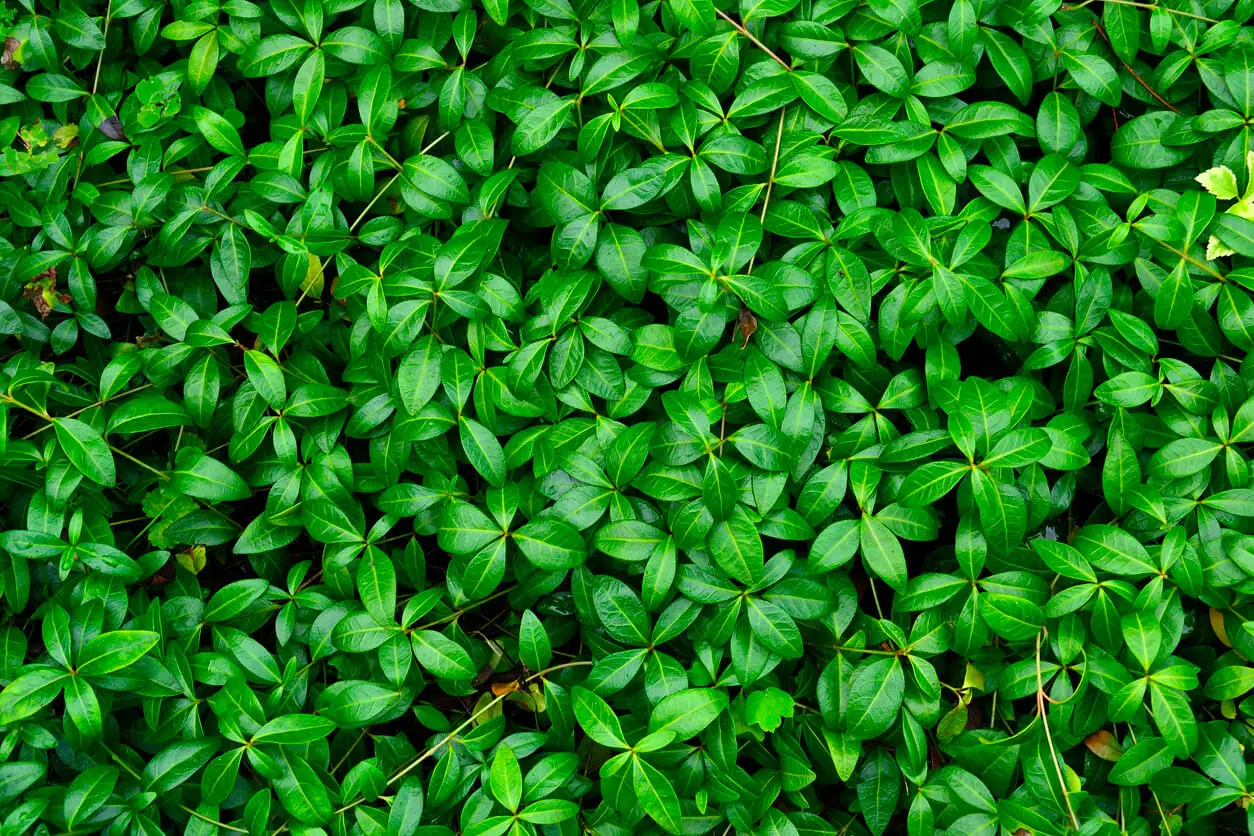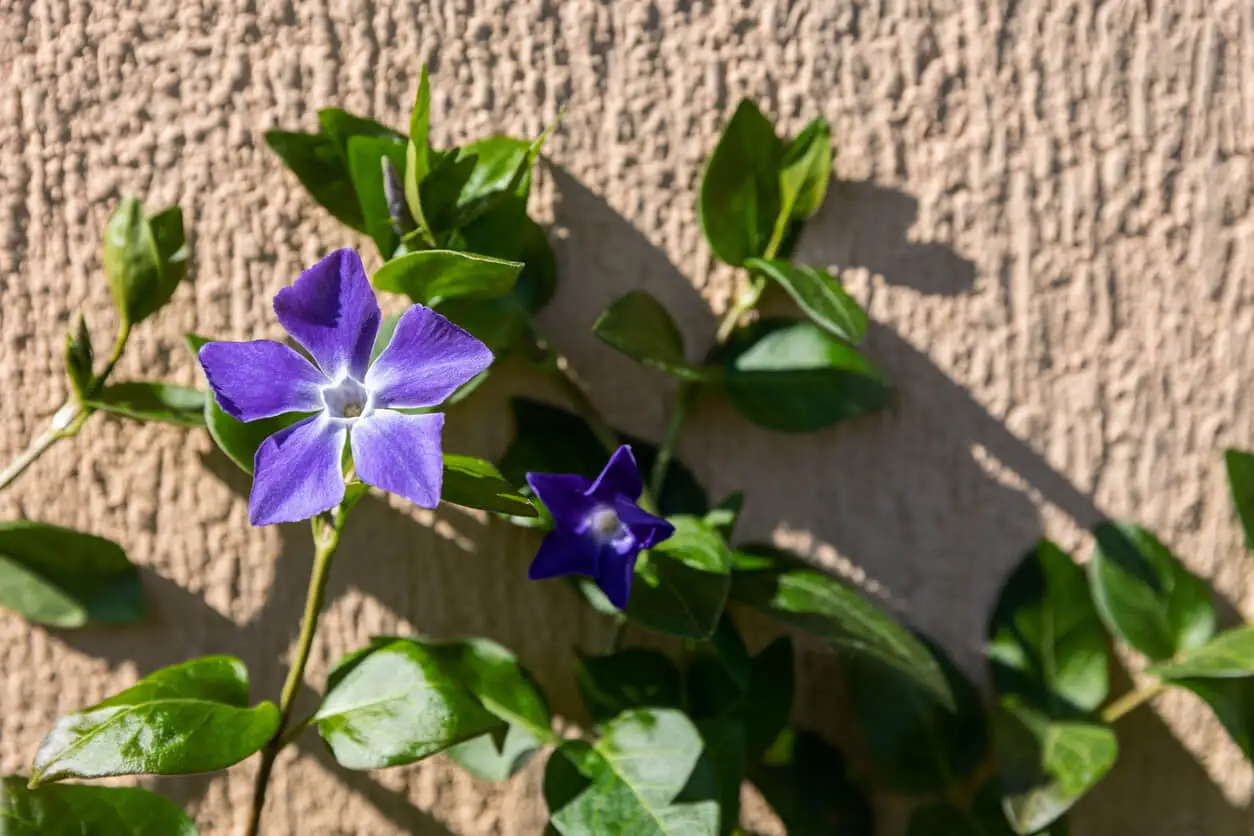A Care Guide for Vinca to Fill Your Garden with Flowers this Spring


Reviewed and approved by the nurse Leidy Mora Molina
The subtle appearance of vinca makes it unimaginable how truly sturdy this plant is. This is a vine that’s able to expand quite quickly outdoors, although it’s sometimes grown indoors.
People with little experience in gardening find an easy ally to learn about the subject in this species due to the few demands and the “mechanical” nature of their care.
Some consider it a subshrub (herbaceous shrub) with high resistance and flowering. As spring approaches, we’d like to take this opportunity to share a simple care manual that will help this plant thrive.
Vinca is perfect for adorning gardens during spring
Vinca is derived from the Apocynaceae family, which is native to tropical climates; it does well in jungles, forests, and temperate regions, as Monaco Nature Encyclopedia points out. The characteristics of the species make it look like a tapestry because it can spread over quite large areas, in rockeries, and on slopes.
It sprouts 5-petaled flowers, whose colors vary according to the soil in which it is planted; the most popular is the mauve or light blue vincas. You can see them in all their splendor in spring and they catch the eye thanks to the dense foliage that forms a carpet intertwined by the stems. Often seen in parks and other green spaces, it has become a favorite to complement home gardens, mainly because of the contrast with other flowers.
The leaves look like green ovals with a fibrous texture. This species also bear fruit, which consists of tiny follicles inside the specimen.
We think you may be interested in reading this, too: How to Make a Bouquet of Flowers at Home: A Step-by-Step Tutorial
Types of vinca for your garden
Some vincas are toxic, as explained in a publication of the Bulletin of the Institute of Studies Giennenses, due to the content of alkaloids with properties that warrant medical intervention. So, it’s a good idea to restrict the contact of children and pets with this plant.
Overall, there are 3 types of the species:
- Major: the Virtual Herbarium of the Western Mediterranean indicates that Vinca major L or “maculata” flowers between March and June. It is the most common of all, with lilac flowers, a rustic touch, and the ability to withstand dry environments. Because it has larger leaves, it limits weed growth.
- Minor: Waste Magazine comments that this kind of vinca is abundant in fields and forest edges; it demands shade and humidity, as well as a temperate climate. Its flowering begins in February and ends in May. In addition, they are specimens that are associated with astringent and healing qualities.
- Gertrude Jekyll: like its “sisters”, it is of extensive growth, so it requires the same considerations. The flowers are white and owe their name to an English landscape gardener of the 19th century.

Vinca care recommendations
Vinca is adaptable to all types of soil, as long as it retains a touch of moisture. It’s not immune to pests, so it’s worth having on hand some remedies against aphids and fungi, as they are the most common diseases.
Let’s take a closer look at how to take care fo this place.
Condition the soil
Whether in a pot or directly in the ground, it’s necessary to drain the soil so that the watering does not stagnate. On the other hand, acid substrates containing peat, sand, soil, and a little perlite are recommended. This is if you plant the vinca in a pot; otherwise, normal soil is sufficient.
Analyze the location
Although the plant grows in all types of soil, it will always do better in an appropriate location. What does this mean? Here’s what you need to know:
- There should be temperatures ranging from 18 °C to 25 °C, with minimums of 10 °C.
- There should be abundant natural light, unless it’s summer because they require semi-shade during this season.
- Low environmental humidity. In fact, in intense summers you can spray water on the leaves, but not on the flowers.
Use fertilizers or organic fertilizers
Although this is not a strict order to fertilize them, it’s advisable to do this with the intention of promoting flowering. From early spring and throughout the summer, fertilize with banana peel tea. Organic fertilizers are suitable for a beautiful bloom.
Water in moderation
It’s advisable to water sparingly or to space out the frequency, unless you notice that the substrate is dry. In summer you could hydrate the plant every day, but during the winter, at the most, 1 weekly watering will be enough.
Prune after flowering
At the end of the flowering stage, you can prune youre vinca, making sure that the new buds do not sprout yet. Pruning includes removing diseased or wilted leaves and flowers, as well as tidying up the soil by picking off any parts of the plant.

Like this article? You may also like to read: 9 Tricks to Preserve Cut Flowers for a Longer Time
Need another reason to grow vinca? These plants have promising health effects
We’ve already mentioned some of the healing properties attributed to vinca. In this regard, the University of La Laguna shared a paper highlighting the therapeutic activity of the chemical components of vinblastine and vincristine, a pair of indole alkaloids that reveal anti-tumor and circulatory properties.
Likewise, the species is linked to antidiarrheal and hypotensive remedies. Of course, the supply derived from this plant strictly has to be approved and supervised by a doctor, as these are delicate substances for self-medication.
Finally, apart from the beauty of the vinca, a compelling reason to include it in your spring vegetation is that, by functioning as a mulch, it serves to cover “unpopulated” spaces and the roots of trees. It’s also a great way to add some originality to your garden.
All cited sources were thoroughly reviewed by our team to ensure their quality, reliability, currency, and validity. The bibliography of this article was considered reliable and of academic or scientific accuracy.
- Cano Carmona, E., Cano Ortiz, A., Cano Ortiz, A. (2009). Plantas prohibidas o restringidas por su toxicidad: flora psicotrópica. Boletín del Instituto de Estudios Giennenses, 200, 73-123. https://dialnet.unirioja.es/servlet/articulo?codigo=3177054
- Encyclopedia Britannica. (s.f.). Periwinkle. https://www.britannica.com/plant/periwinkle-plant
- Grassa Rodríguez Pastrana, A. M. (2020). Las vincas: del jardín a la farmacia [Trabajo de Fin de Grado, Universidad de La Laguna]. RIULL – Repositorio Institucional. https://riull.ull.es/xmlui/handle/915/20469
- Herbario Virtual del Mediterráneo Occidental. (s.f.). Vinca major L. Consultado el 20 de septiembre de 2023. http://herbarivirtual.uib.es/es/general/1278/especie/vinca-major-l-
- Khanavi, M., Pourmoslemi, S., Farahanikia, B., Hadjiakhoondi, A., & Ostad, S. N. (2010). Cytotoxicity of Vinca minor. Pharmaceutical Biology, 48(1), 96–100. https://pubmed.ncbi.nlm.nih.gov/20645762/
- Mazza, G. (s. f.). Apocynaceae. Monaco Nature Encyclopedia. Consultado el 20 de septiembre de 2023. https://www.monaconatureencyclopedia.com/apocynaceae/?lang=es
- NC State University. (s.f.). Vinca major. Consultado el 20 de septiembre de 2023. https://plants.ces.ncsu.edu/plants/vinca-major/
- NC State University. (s.f.). Vinca minor. Consultado el 20 de septiembre de 2023. https://plants.ces.ncsu.edu/plants/vinca-minor/
- Stander, E. A., Cuello, C., Birer-Williams, C., Kulagina, N., Jansen, H. J., Carqueijeiro, I., Méteignier, L. V., Vergès, V., Oudin, A., Papon, N., Dirks, R. P., Jensen, M. K., O’Connor, S. E., Dugé de Bernonville, T., Besseau, S., & Courdavault, V. (2022). The Vinca minor genome highlights conserved evolutionary traits in monoterpene indole alkaloid synthesis. G3, 12(12), 268. https://www.ncbi.nlm.nih.gov/pmc/articles/PMC9713385/
This text is provided for informational purposes only and does not replace consultation with a professional. If in doubt, consult your specialist.








